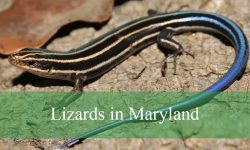We’ll explore the fascinating world of red spiders in California in this article. These arachnids add to the rich biodiversity of the state. Some have stunning red markings on their bodies, while others have a totally red appearance. Come explore the variety of red spiders that call California’s landscapes home.
Different Types of Red Spiders in California
Ceratinopsidis Formosa
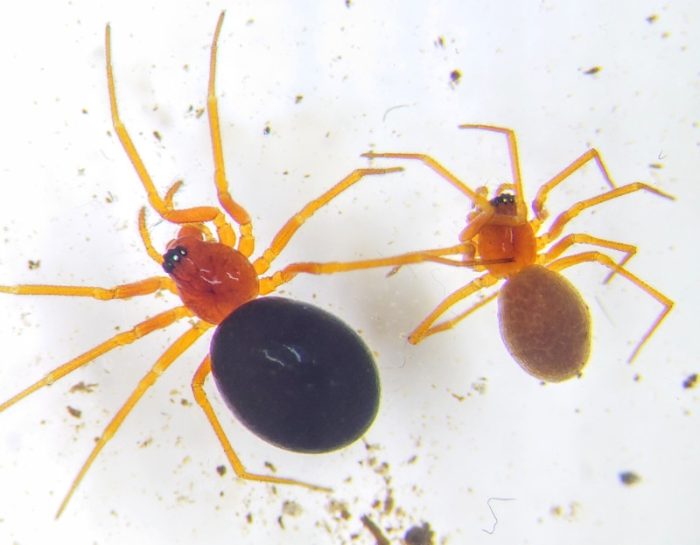
The Ceratinopsidis formosa, presents a striking red hue throughout its body. Belonging to the dwarf spider family, it predominantly inhabits North America. With a diminutive size of 0.15 inches and medium venom potency, this species thrives in various habitats across its range.
Spinybacked Orbweaver
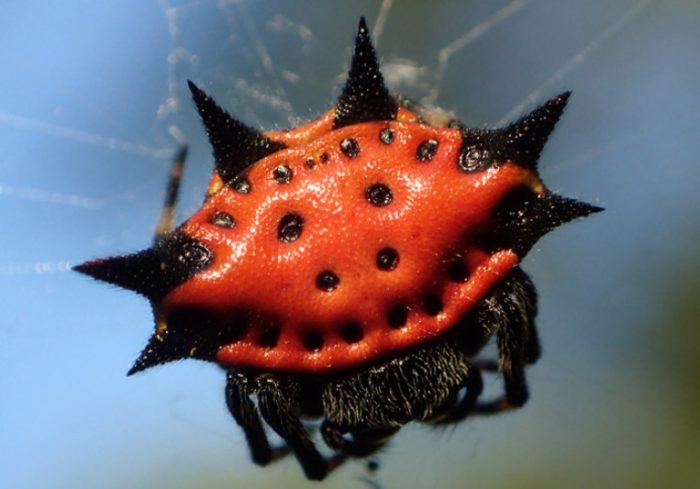
The Spinybacked Orbweaver, belonging to the Gasteracantha genus, stands out as one of the world’s most uniquely designed spiders. Found in woodlands and gardens across numerous North American states, it exhibits a variety of colorations and patterns, with red being a common hue. Despite its striking appearance, its venom potency is low, posing minimal threat to humans.
Triangle Orbweaver
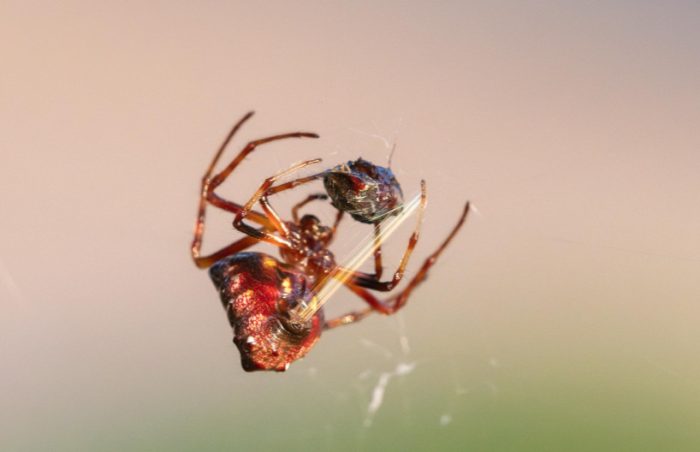
The Triangle Orbweaver, scientifically named Verrucosa arenata, is characterized by its distinctive triangular body shape. While males exhibit a red hue, females display varying darker coloration patterns. With a size of 0.5 inches and a venom potency ranging from low to medium, it frequents gardens across rural and occasionally urban areas of North America.
Western Black Widow Spider
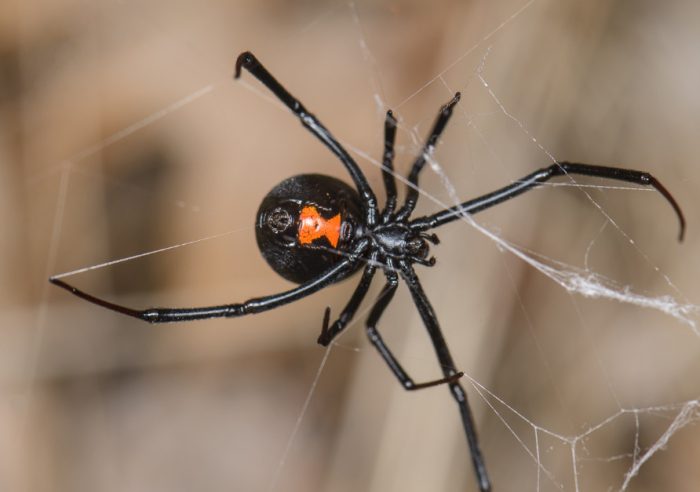
The Western Black Widow Spider, scientifically termed Latrodectus hesperus, predominantly features a black body with a distinctive red marking on its abdomen. While not as red as its namesake, its venom remains potent, posing a significant threat to humans. Found in forest habitats, it shares the widow spider’s reputation for toxicity.
Whitman Jumping Spider
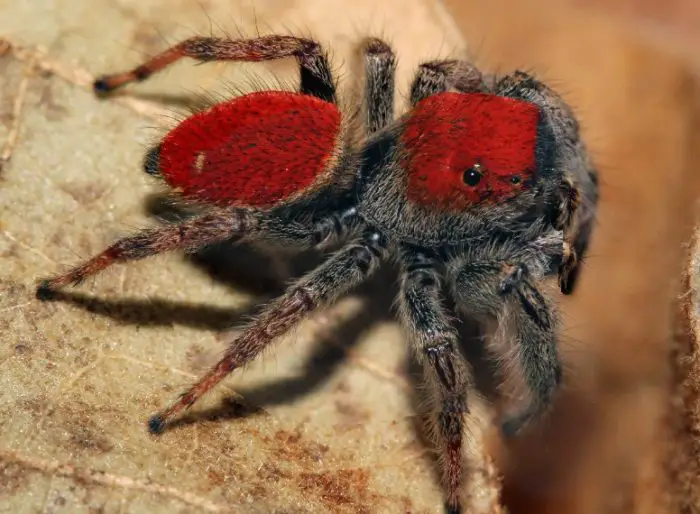
The Whitman Jumping Spider, scientifically known as Phidippus whitmani, inhabits North American forests, boasting a vivid red hue. While females lean towards brown, both genders can deliver a painful bite, attributed to its medium venom potency. Though typically not causing severe medical issues, encounters should be approached with caution.
Phidippus Asotus
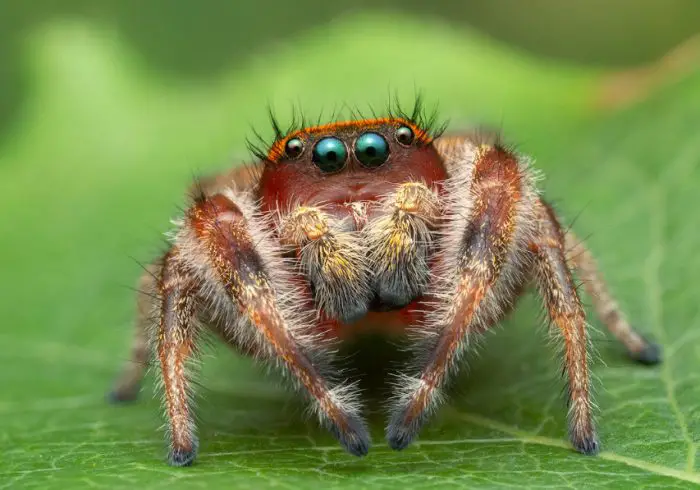
Phidippus asotus, found in grasslands, features dark red hues around its eyes, though predominantly black. Some females lack this red coloration entirely. With a size of 0.3 inches and a venom potency ranging from low to medium, it adapts well to diverse grassland habitats.
Phidippus Carneus

One of the most intriguing red spiders is the Phidippus carneus, which has a bright red abdomen and blue fangs. Measuring 0.5 inches in length and with a low to medium level of venom power, it is difficult to come across in a variety of environments.
Phidippus Pius
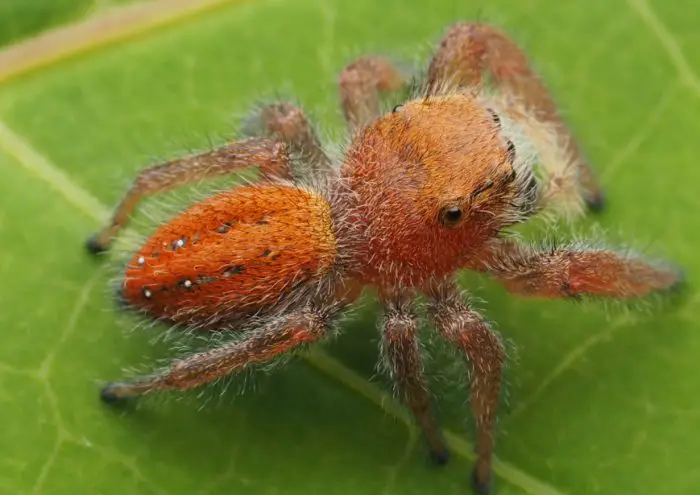
Phidippus pius, an arachnid thriving in grasslands and prairies, is a notable red jumping spider. Females lean towards orange hues, contrasting with the more vivid red coloration typically found in males. With a size of 0.87 inches and a venom potency ranging from low to medium, it navigates its habitat with agility.
Phoenix Jumping Spider
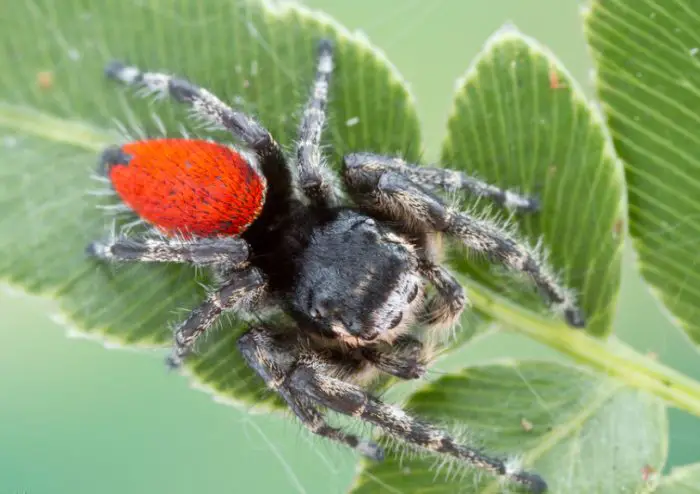
The Phoenix jumping spider, scientifically known as Phidippus phoenix, boasts a distinctive red abdomen, thriving in open grasslands. Feeding primarily on smaller insects, it inhabits regions across the United States, Mexico, and other parts of the world. With a size of 1 inch and a venom potency ranging from low to medium, it plays a vital role in its ecosystem.
Red Widow Spider

The Red Widow Spider, scientifically named Latrodectus bishop, dwells in Florida’s sand dunes, distinguished by its predominantly red body with black markings. With a venom potency classified as high, caution is advised as encounters with this species, typical of widow spiders, can be hazardous due to its toxicity. Its distinctive red body and legs serve as identifying features.
Rhetenor Texanus
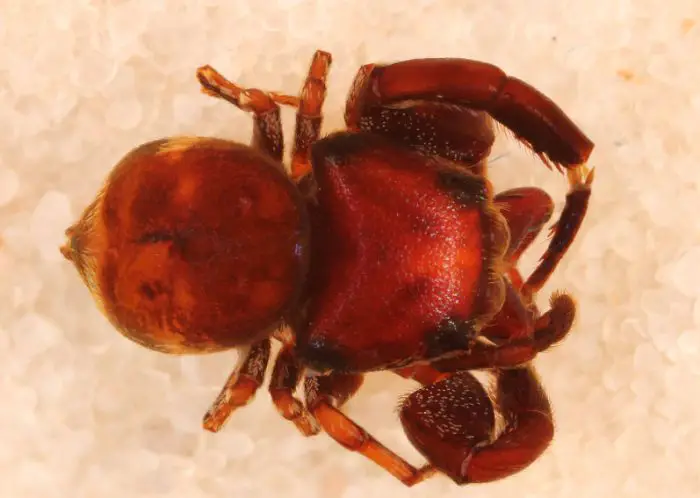
Rhetenor texanus, a red jumping spider species prevalent in Texas and California, boasts a striking all-red coloration. Among the smallest spider species, individuals can measure merely 0.2 inches. Adapted to various habitats, this diminutive arachnid contributes to the biodiversity of its ecosystem with its vibrant presence.
Six Spotted Orbweaver
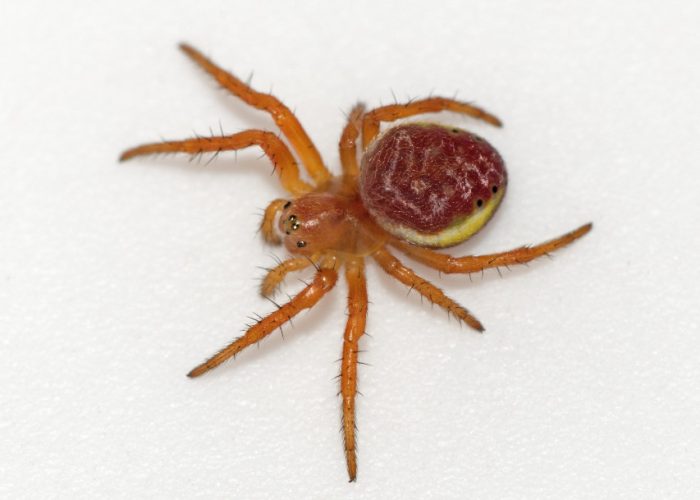
The Six Spotted Orbweaver, scientifically labeled Araniella displicata, is a red-hued spider favoring grasslands and bushy locales, where it spins expansive webs. Sporting distinctive spots on its body, this species derives its name from this unique feature. With a size of 0.3 inches and medium venom potency, it thrives in swamps, gardens, and grasslands.
Araneus Iviei

The remarkable color scheme of Araneus iviei is dominated by vibrant colors of red, with occasional hints of orange. It is only 0.3 inches long and lives in several locations in both the United States and Canada. Because of its small size and low venom potency, interactions with this spider are often safe.
Apache Jumping Spider
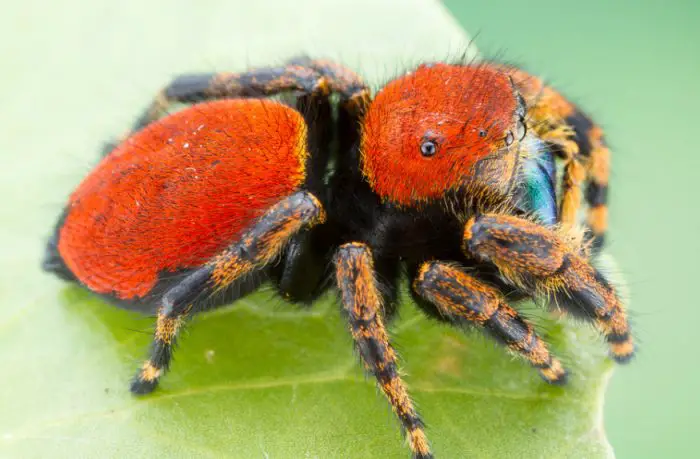
The Apache jumping spider, scientifically known as Phidippus apacheanus, stands out with its distinctive red markings on the abdomen and cephalothorax, contrasting with its predominantly black body. Despite its small size of 0.8 inches, this arachnid is an adept hunter, utilizing its impressive jumping abilities. While its venom is relatively low in potency, it remains a formidable predator in various habitats.
Black-Tailed Red Sheetweaver

The scientific name for the Black-Tailed Red Sheetweaver is Florinda coccinea. It is a red spider with brown legs that makes large sheet webs in lawns and grasslands. Measuring barely 0.16 inches in length, it feeds on tiny insects entangled in its complex web. Despite its beauty, its venom potency is classified as medium.
Cardinal Jumping Spider
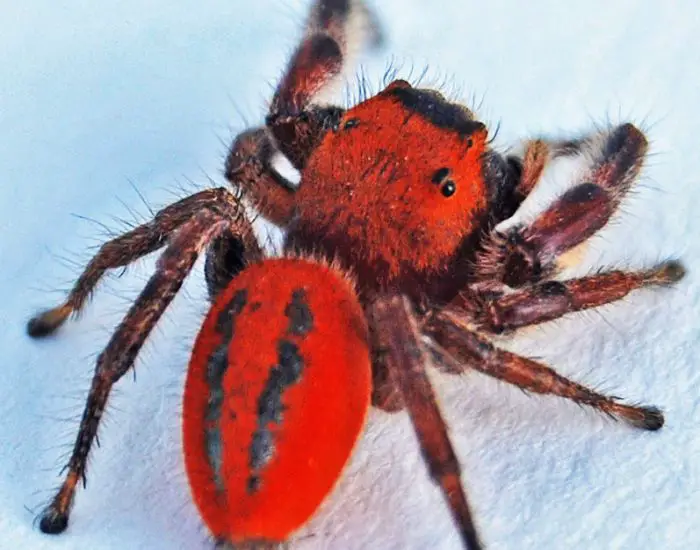
The Cardinal Jumping Spider, scientifically labeled Phidippus cardinalis, exhibits red markings akin to its Apache counterpart. Males sport more vivid hues than females. While proficient jumpers, they can also deliver mildly painful stings due to their low-medium venom potency, although not posing significant danger to humans. Found in forest habitats, they navigate their surroundings with agility.
Castianeira Amoena
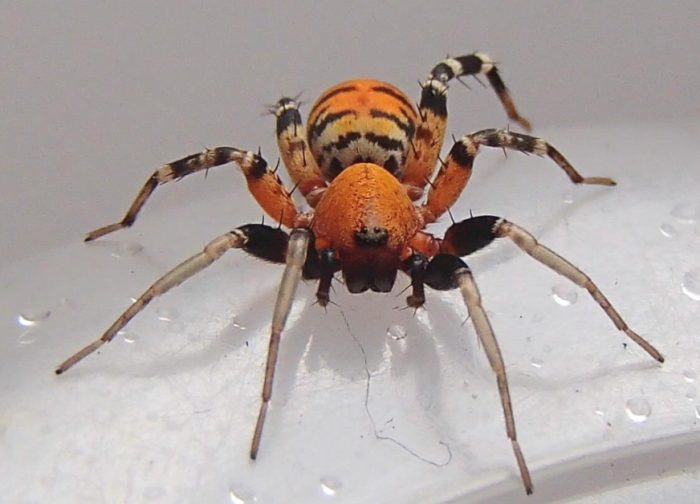
The Castianeira amoena, with its medium venom potency and size of 0.4 inches, often gives the impression of being related to ants, although it belongs to the spider family Corinnidae. Found in various habitats, it showcases unique adaptations and behaviors within its ecological niche.
People Who Read This Also Read:





